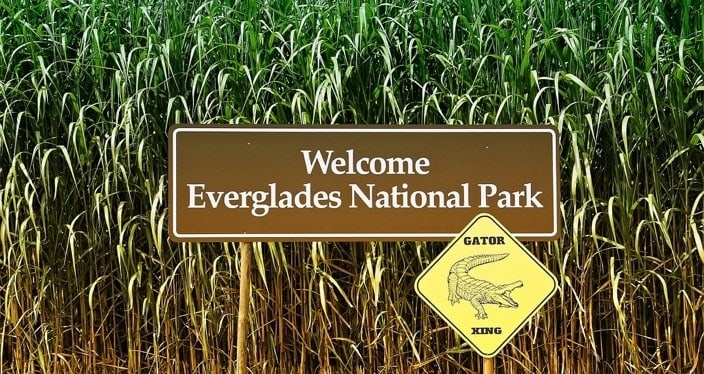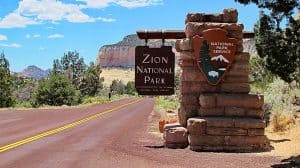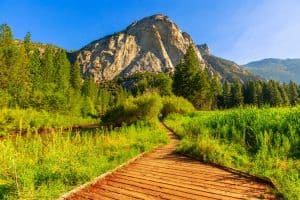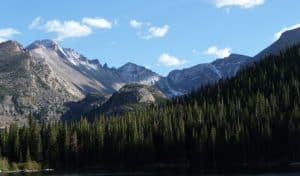Last Updated on July 7, 2022 by Aswetravel
Everglades National Park is the largest subtropical wilderness in the United States. It occupies 1.5 million acres in Key Flora, Miami, Florida. This massive wetland is home to hundreds of rare plant and animal species.
The park constitutes three separate areas. The main and largest section of the park is near Homestead Town. You can also discover the Shark Valley area and the Everglades. There are roads such as Big Cypress that connect the various sections of the park.
Best Time to Visit Everglades National Park
Everglades National Park is open all year round. However, operating hours vary depending on the season, weather, and staff levels. In general, there is a best time to visit Florida.
There are two main seasons: dry season and wet season.
Dry Season
The dry season is the most popular as the weather is warm, and there is a low risk for hurricanes. It is between November and April, and all park activities and facilities are open, including numerous ranger-led activities.
This is the best time for kayaking tours, airboat rides, hikes, sightseeing, and wildlife viewing. Most animals come out during the dry season as well, so they are easy to find.
However, the weather is extremely hot and humid. It is best to plan your activities for morning hours up to around 11 am or in the afternoon, after 3 pm, when it is much cooler.
Wet Season
On the other hand, the wet season lasts between April and October. It is less crowded, but some of the facilities and activities are closed. The landscape is green and lush during this time of year. You can spot some wildlife during the wet season, but it may take a bit of searching. For instance, alligators only come out in the morning and evening to bask. You may not spot any on a cloudy day.
Everglades National Park Weather
Here is a little of what you can expect each month during the different seasons in Everglades National Park.
January to February
In January and February, the climate is relatively warm and pleasant. Temperatures range between 68° and 77°F. Most days are sunny and humid, and there is hardly any rain. This is a great time to visit the park. Water levels are also low, meaning animals are easily found near watering holes.
March
In March, the weather is unpredictable. Many days are cloudy, and occasionally there are strong winds. The temperatures in the region begin to rise, averaging 79°F. It is still a good time to visit the park for alligator and bird sightings.
April
April is the least humid month (65%), and there is a bit of precipitation. The temperatures continue to rise, averaging at a high of around 83°F with a low of 70°F. It is the last month during the dry season, and it brings the peak season at the park to a close. It is an ideal time to hike and see alligators mating.
May
May is the beginning of the wet season. The temperatures rise, reaching highs of 86°F. The park receives rain on some days, and water levels begin to rise. There may be a thunderstorm later in the day. Mosquitoes are quite prevalent during this season. Although tourist numbers decrease significantly, the weekends are still relatively busy.
June to July
June is mostly rainy, with frequent afternoon thunderstorms. Temperatures continue to rise, averaging 89°F. Tourist numbers are quite low at the park. In July, the weather conditions are tropical-like – high temperatures exceeding 90°F and high humidity. Most days are still rainy. Wildlife is rare in the usual spots.
August
August is the hottest month, with highs in the 90s, and thunderstorms are common in the afternoon. This is peak hurricane season in Florida, so you need to stay up-to-date with weather forecasts and alerts.
September to October
In September, temperatures cool down slightly, but it is still quite hot and humid, making it difficult to explore outdoors. The risk of hurricanes during this time is low. October marks the end of the wet season as rainfall reduces and humidity levels fall.
November to December
In November and December, the temperatures lower to a warm and comfortable level, marking the dry season’s beginning. The park opens up, and visitor numbers and activities increase. The average low temperature this time of year is around 64°F.
9 Things to do in Everglades National Park
Sign Up for a Ranger Program
There are different ranger-led programs in various parts of the park. You can sign up for slogging, biking, boating, kayaking, a boat tour, and moonlight walking. These programs are a great option if you are new to the Florida Everglades and don’t know where to start your exploration.
Even If you have been to the Florida Everglades before, the programs help you discover new places and gain in-depth knowledge of the park.
Most of the ranger-led activities require advance booking. You may need to pay an extra fee besides the entrance pass, depending on the type of activity.
Catch an Alligator Wrestling Show at Miccosukee Indian Village

Inside Everglades National Park is Miccosukee Indian Village. The villagers are friendly and welcoming to visitors.
You will get to learn about the culture and history of the Miccosukee Indians. Inside the village is a museum where you will find historical artifacts and paintings. The village also has a variety of dining establishments where you can try out their cuisine.
If you are on a multiple-day visit to the park, you can book lodging in advance at the 302-room resort within the village. The resort has a wide range of amenities, including a fitness center, spa, salon, and kid-friendly arcade.
Make sure to catch the alligator wrestling show. The cultural alligator show involves the Indian Tribesmen performing rituals in a pit filled with alligators. Some tribesmen do stunts, such as putting their head or hand into the alligator’s mouth. Also, you might get a chance to take a picture with a baby alligator after the show.
Birdwatching

Everglades National Park is home to over 300 species of birds, including land birds, wading birds, and birds of prey. It is considered the largest habitat and breeding ground for wading birds across North America. In this tropical wilderness, thousands of birds feed and quench their thirst, migrate from one area to another, and raise their young.
As you explore the park, you are bound to encounter some of these birds. However, if you want to be strategic about bird watching, there are specific birdwatching locations across the park.
Visit one of the visitor centers and ask the park ranger about the best birdwatching trails. Also, request a map that shows the different birding trails. The birdwatching locations are usually indicated by a green binocular symbol. Remember to bring a pair of binoculars for your birdwatching expedition.
The bird population and concentration change throughout the different seasons. The best time for bird watching is in the winter dry season. Most birds move towards permeant water bodies, which makes them easy to find and observe. In the wet season, the birds concentrate around Nine-Mile, Paurotis Pond, and West lake.
Visit Shark Valley
At Shark Valley, you are bound to see more alligators than you have probably ever seen. It is a small section of the park, but there is so much to see, including snakes, turtles, fish, and birds. There is a small visitor center where you can learn about the wildlife and rent bikes or trams to tour the area.
You can explore most of Shark Valley by hiking, cycling, and participating in a tram tour around the 15-mile loop that surrounds it. Alligators often bask near or on the trail, so give them space, especially if you are on foot or bike. Halfway through the loop is an observation tower that gives you a great overlook of the Everglades.
You can easily access Shark valley through the Shark Valley entrance off the Tamiami Trail (US Highway 41). Note that there are limited parking spots at the Shark Valley visitor center. Be sure to arrive early to get a spot, or you will have to wait for several hours. Shark Valley is open between 8:30 am and 6:00 pm during peak season.
Explore the Gumbo Limbo Trail
The Gumbo Limbo Trail is a 0.5 mile, short trail within Everglades National Park and near the Homestead entrance. It starts at the Royal Palm Visitor Center.
It is an easy and tranquil trail. It is moderately trafficked and brings you up close with dense vegetation. It is C-shaped with two trailheads leading to the visitor center. This section of the road is slightly more elevated than the surrounding wetlands. The easiest way to access it is on foot or by bike. It is also wheelchair accessible.
It is named after the Gumbo Limbo trees, which are prevalent on the hiking trails. The unique trees have reddish-brown barks that peel off. You may also encounter Poisonwood on this trail. Keep away as its sap is highly poisonous. It is easily identifiable by the oozy dark blotches on its smooth tree trunk.
Explore Anhinga Trail
The Anhinga Trail also starts at the front side of the Royal Palm Visitor Center. However, these hiking trails do not connect with the Gumbo Limbo trail at any point. It is a 0.8-mile trail named after the Anhinga bird. Unlike the Gumbo Limbo trail, which is filled with vegetation, the Anhinga trail is filled with animals. You will likely encounter different species of birds, turtles, and alligators.
Besides the first section of the trail is a pond on one side and a canal on the other. About 0.2 miles into the trail, you will find a boardwalk with two observation decks where you can see alligators and birds.
If you are short on time, prioritize the Anhinga trail over Shark Valley. You will get to see a similar variety of animals as you would on the Shark Valley but across a shorter distance.
Take an Everglades Airboat Tour
An airboat ride is an exciting and fast way to see the Everglades. It is thrilling as you zip through the water. However, you won’t have ample time to take in the scenery as the airboats are loud and fast. However, this kind of boat ride allows you to cover significant distances across the park.
There have been concerns about the disturbance the airboats cause on the natural landscape and its habitats. However, park management wants to allow people to enjoy their time. So, they have set up regulations to enable visitors to explore while still protecting the environment. Make sure to only use airboat companies authorized to operate in the park. They adhere to the protocols and routes stipulated by park management.
Take a Slogging Tour
A slogging tour in the Florida Everglades is primarily a park ranger led tour through designated areas in Shark Valley and the Royal Palm districts. Slogging is walking in swampy murky waters. It is usually done during the summer season when the water levels are higher.
You need to make a reservation for the tour. Wear long pants and closed-toe shoes. Follow the park ranger’s instructions carefully. The swampy places in the Everglades tend to have mosquitos, so apply bug repellent before heading out.
Kayak in the Ten Thousand Islands
The Ten Thousand Islands are of the Florida Keys is a world-class kayaking and paddling destination for people with different skill levels. The southern part of the islands can be accessed from Everglades National Park.
This side of the area has nine islands and numerous kayaking routes. It has a maze of groves that offers beautiful coastal scenery. You will get to see lots of water wildlife and some birds.
If you are lucky, you might see some bottlenose dolphins and manatees. However, note that some sections may have crocodiles and alligators. You can rent a kayak from the Gulf Coast Visitor Center.
How to Get to Everglades National Park
There are three main entrances to Everglades National Park:
- Main Entrance. It is open 24/7 all year round. It is located near the Royal Palm and Flamingo areas.
- Chekika Area. The Chekika area entrance closed in 2013 due to a lack of resources to maintain its operations. However, it is still accessible to individuals, groups, and organizations with special park use permits.
- Shark Valley Area entrance. It is open daily, 24/7, but vehicle access is restricted from 8:30 AM to 6:00 PM.
- Everglades City/ Naples Entrance. It is open 24/7.
Everglades National Park
Everglades National Park is vast, so it would take several multi-day visits to explore it comprehensively. However, a 2-3 day trip is sufficient and allows you to sample some of the best spots and activities the park has to offer. The must-do activities include alligator sightseeing, airboat tour, kayaking, and hiking at least two trails.
Grand Canyon Hiking
Olympic National Park Hikes
Things to Do in Bryce Canyon
Zion National Park Camping | Camping in Zion
Glacier National Park Camping
Best Time to Visit Joshua Tree National Park
Best Time to Visit Death Valley
Yosemite Hiking Trails
Yellowstone Hiking Trails
Things to Do in Rocky Mountain National Park
Best Time to Visit Zion National Park
Best Time to Visit Glacier National Park
Best Time to Visit Yellowstone
Best Time to Visit Yosemite
National Parks in the USA That Should Be On Your Travel List
Saguaro National Park Tucson Arizona




